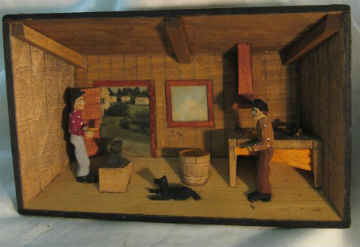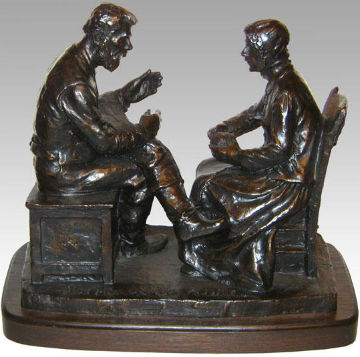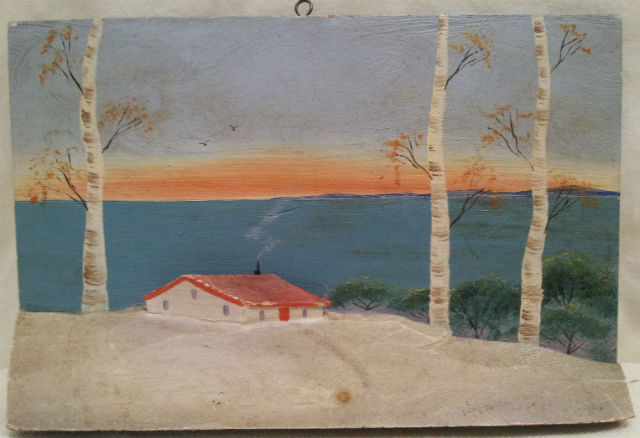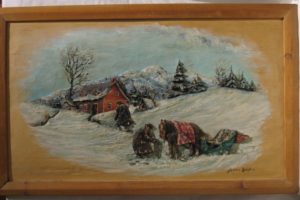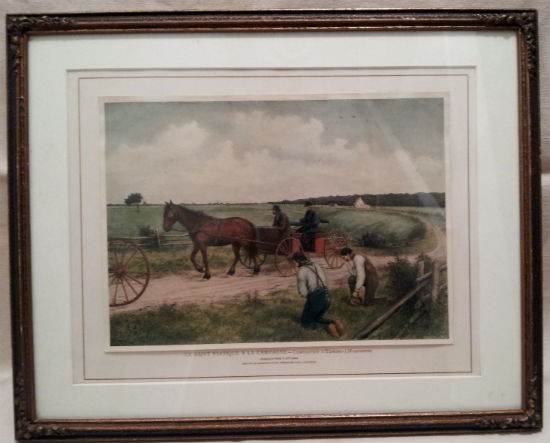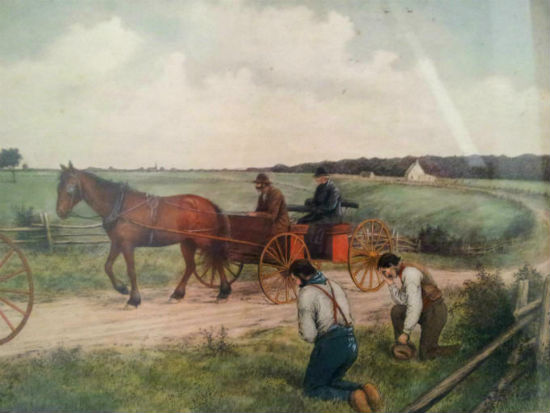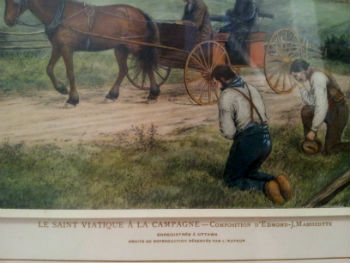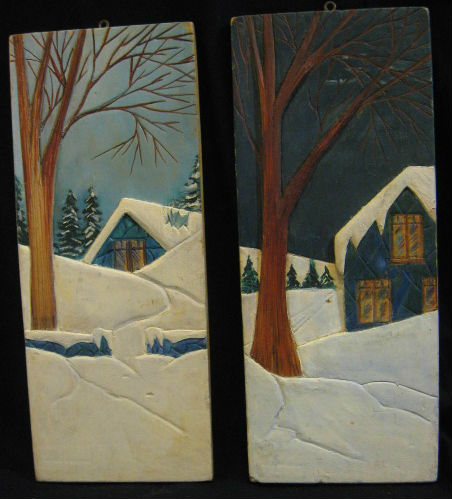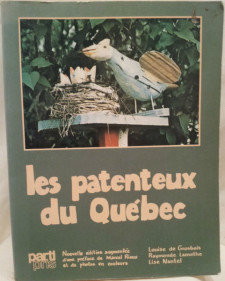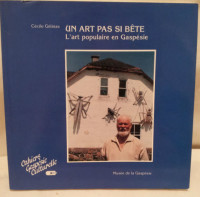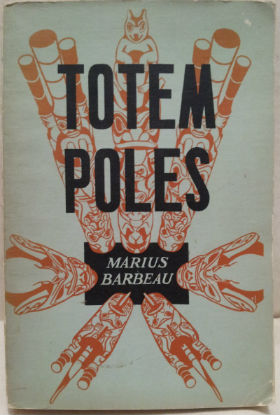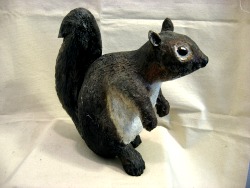Some Notes on Quebec Souvenir Art.
* Shadow Boxes.
Quebec Folk Artists, inspired by the engravings of Massicotte, the Bronzes of Laliberte and interpretations of them by other artists, reproduced them in their own work. The Bourgault family of artists made many of these, particularly Andre Bourgault, or his studio, and Celine Bourgault, who often signed her name to them. The work was often done by female artists as these images were sometimes very small and required small hands.
They were made in different sizes and they depicted traditional scenes of family and village life. The inside of Blacksmith shops. An interior scene of a Butcher’s shop. A tavern and General store. And family scenes of a kitchen or parlor with furniture and a grandfather clock. Always with people and a dog on the rug. If there was a window or an open doorway in the ‘room’, there would be a painted scene or a tiny piece cut from a local post card to simlulate the view outside. They were made of Pine and Basswood (Tilleul) and always painted in watercolors.
A Bourgault example:
I have seen wonderful little shadow boxes with interior scenes and covered by a window frame complete with sash and muntins (as though we, the viewer, were outside looking into the room) and a clear celluloid window pane. And one, in particular, signed in the lower right in ink: Celine Bourgault. It was a living room interior with a window on the opposite wall facing the viewer. Painted in the ‘window’ was a tiny view of the St. Lawrence River. This shadow box by Celine Bourgault was about 5 by 7 inches.
A Laliberte bronze (The Conversation is a popular theme Quebec folk art):
Some Background:
* (Ref. Bronzes d’Alfred Laliberte, Legendes-Coutoumes-metiers de la Nouvelle France. Librarie Beauchemin Limitee, Montreal. 1934.)
* (Ref: Nos Canadiens D’Autrefois. Edmond-J. Massicotte, Librairie Granger et Freres, Montreal. 1923.)
* (Ref: BOUCHARD, Georges. Vieilles choses, vieilles gens : silhouettes campagnardes. Préface de l’honorable Rodolphe Lemieux ; bois gravés de Edwin H. Holgate. Montréal : Librairie Granger Frères, 1943) Published in English under the title: “Other Days; Other Ways.”
*Relief Carvings. Les Bas reliefs.
Another sculptural form was relief carvings. From simple ones to the very elaborate. There were ones in the ‘flat plane’ carved style from Saint-Jean-Port-Joli; painted in water colors. And there were those more naïve and primitive; often painted in ‘as found’ colors – usually oil-based house paint. Some artists, like Yvonne Bolduc, made their own paints from materials at hand.
They carved and painted simple scenes like a house on a hill in winter and more developed themes like ‘The Doctors Visit’ or ‘The Mardi Gras at New Years’. ‘The Doctor’s Visit’ was carved by Yvonne Bolduc. Probably more than once. And ‘Mado’ Lizotte made fine applied reliefs of these themes several times. Both these artists have their works in Museum and private collections.
The materials used were Pine or Basswood panels and in the case of applied relief carvings ‘as found’ materials could include anything; any sort of material that was available.
(I once had a large and naive (1930’s) mounted shadow box under glass of a Gaspe Shore boat model. It was wonderfully painted and adorned with every kind of nautical element. All along the railing of the model were mounted the round red life preservers of the time. And they were actually real Life Saver candies (the name was on them). They seemed a logical choice in ‘as found’ work. The size was right too.)
A simple Applied Relief carving. Unsigned. (1930’s) A house in winter on the Gaspe shore:
A ‘bas relief’ carving by Yvonne Bolduc. “The Doctor’s Visit:
- Yvonne Bolduc. The Doctor’s Visit. Provenence.
- *Works of Collage using Postage Stamps:
- These were done only by Les Franciscaines Missionaires de Marie; a Missionary group based in Quebec City. Some were signed by the particular artist but most were signed only by the Group. Their works were sold as souvenirs of Quebec to raise funds for the Missions. They were inspired by the same themes as other Quebec artists but their work was always scenes of Quebec; they never included people. See the post in the Biography pages under:
- http://lyleelderfolkart.com/artist-bios/franciscaines-missionnaires-de-marie/
- An Example:
-
